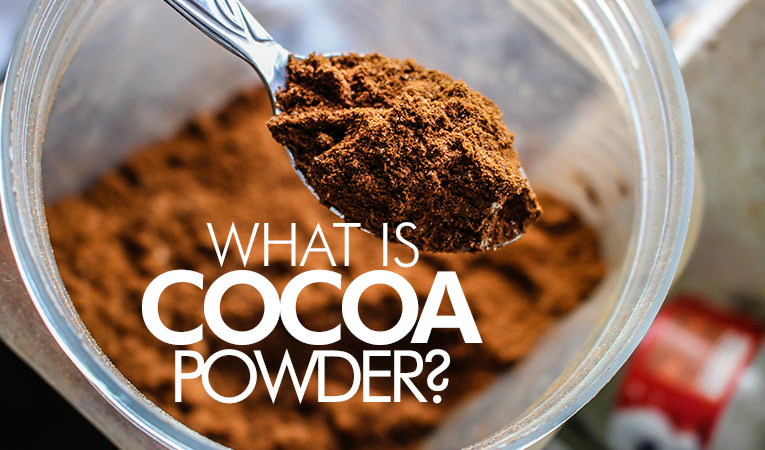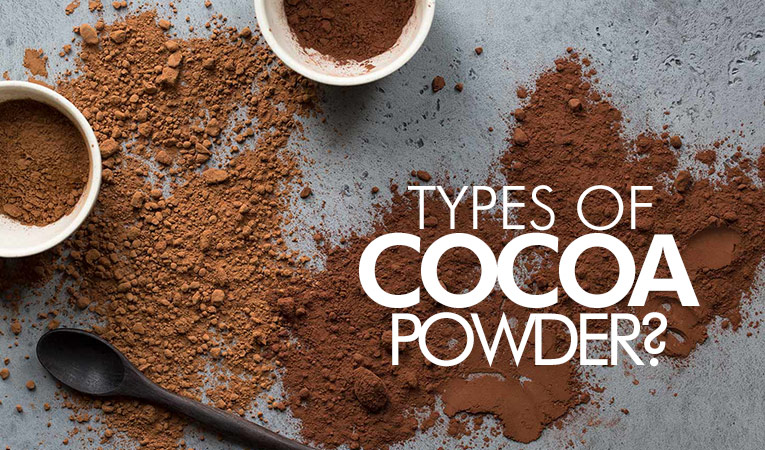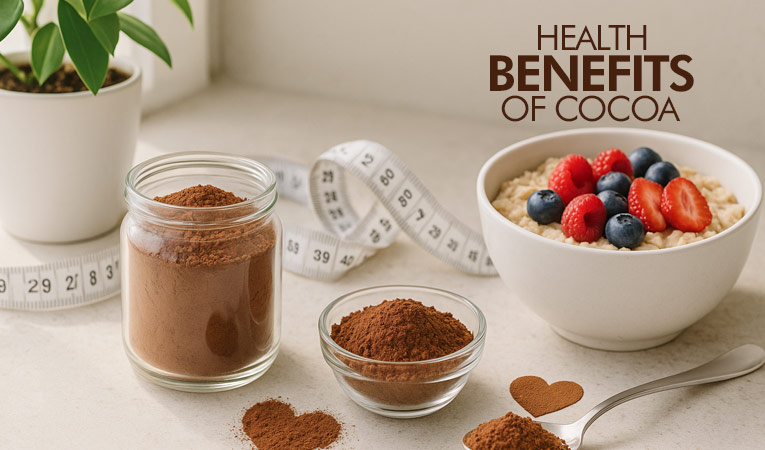What is Cocoa Powder?
05-05-2025

Cocoa powder is one of the most versatile and essential ingredients in both chocolate making and baking. Derived from the cacao beans, cocoa powder has been used for centuries to create some of the world's most beloved chocolate confections and baked goods. Its rich, earthy flavor and ability to blend seamlessly with other ingredients make it an indispensable component in recipes ranging from cakes and cookies to ganaches and drinks.
The origin of cocoa powder traces back to the cacao tree (Theobroma cacao), which is native to the tropical regions of Central and South America. The beans of the cacao tree are harvested, fermented, and roasted to create the cocoa mass, which is then processed to remove cocoa butter, leaving behind the fine powder we use today. Cocoa powder is not just a fundamental element in chocolate production; it also plays a pivotal role in baking, where its ability to infuse dishes with deep chocolate flavor is unmatched.
As we explore the significance of cocoa powder, we’ll dive deeper into its role in chocolate making, its importance in baked goods, and how different types of cocoa powder impact your recipes. Cocoa powder, with its unique qualities, is essential to creating the perfect chocolatey treat.
What is Cocoa Powder?
Cocoa powder is made from the dried solids left after the extraction of cocoa butter from cocoa mass, which is the result of grinding roasted cacao beans. The process begins with harvesting cacao pods, followed by fermenting, drying, and roasting the beans. The beans are then cracked open to remove the outer shells, and the remaining nibs are ground to create cocoa mass. This cocoa mass contains both cocoa solids and cocoa butter. During the production of cocoa powder, the cocoa butter is separated from the cocoa mass, leaving behind the dry cocoa solids, which are then finely ground into cocoa powder.
There are two primary types of cocoa powder: natural cocoa powder and Dutch-processed cocoa powder.
- Natural Cocoa Powder: This type of cocoa powder is processed without any alkali treatment. It is light brown in color and has a sharp, slightly bitter flavor due to its natural acidity. Natural cocoa powder is often used in recipes where baking soda is called for, as its acidity helps activate the leavening agent.
- Dutch-processed Cocoa Powder: Also known as alkalized cocoa powder, Dutch-processed cocoa powder is treated with an alkali to neutralize its acidity. This results in a darker, smoother cocoa powder with a milder flavor. Dutch-processed cocoa powder is ideal for recipes that use baking powder as the leavening agent and is known for its deep, rich color and smoother texture.
Understanding these two types of cocoa powder and their characteristics helps you make the best choice for your specific recipes, ensuring optimal results in both baking and chocolate making.
Cocoa Powder in Chocolate Making
In artisan chocolate making, cocoa powder plays a vital role in enhancing the flavor, color, and texture of the final product. One of its key applications is intensifying the dark chocolate taste, adding depth and complexity to the flavor profile. By incorporating cocoa powder, chocolatiers can elevate the richness of dark chocolate, providing a bittersweet and full-bodied chocolate experience that is essential for high-quality, handcrafted chocolates.
Cocoa powder is also commonly used in the coating of chocolates, especially for truffles or pralines. After the chocolate centers are formed, they are rolled in cocoa powder to create a smooth, velvety finish that balances the richness of the ganache or chocolate core. This not only enhances the texture but also adds visual appeal, offering a luxurious exterior that complements the soft, creamy interior.
Additionally, cocoa powder helps adjust the texture of chocolates, contributing to a smoother consistency in ganaches, truffles, and bars. It is also used in chocolate drinks and dessert sauces, providing a rich flavor without adding excess fat. In all its applications, cocoa powder is a versatile ingredient that brings out the best in artisan chocolate, enhancing both the flavor and appearance of handmade confections.
The Role of Cocoa Powder in Baking
Cocoa powder is a crucial ingredient in a wide range of baked goods, contributing rich chocolate flavor, deep brown color, and a smooth texture. Whether you're baking a chocolate cake, cookies, or brownies, cocoa powder plays a central role in achieving the desired taste and appearance. It provides a distinct, intense chocolate flavor that elevates the entire baking experience, ensuring that the end result is both flavorful and visually appealing.
- Enhances Flavor: Cocoa powder adds a complex, bittersweet chocolate taste that is deeper and more intense than chocolate chips or chunks. It’s perfect for recipes where the chocolate flavor needs to stand out, such as in brownies, where chocolate is the star.
- Blends Well with Dry Ingredients: Cocoa powder easily integrates with other dry ingredients like flour and sugar, ensuring even distribution of chocolate flavor throughout the batter. This makes it a better choice than chocolate bars or chips, which may alter the texture and sweetness of the final product due to their higher fat content.
- Affects Texture and Moisture: The dry nature of cocoa powder helps absorb moisture in the batter, contributing to a tender, moist crumb in cakes and brownies. It also aids in maintaining the right moisture balance, preventing baked goods from becoming too dense or heavy.
- Creates Signature Color: Cocoa powder is responsible for giving chocolate-based treats their dark brown color, making cakes, cookies, and brownies more visually appealing as well as delicious.
Overall, cocoa powder is indispensable for adding the perfect balance of flavor, texture, and color to baked goods, making it a must-have ingredient in every baker’s pantry.

Types of Cocoa Powder Used in Baking and Chocolate Making
Cocoa powder comes in two main varieties: natural cocoa powder and Dutch-processed cocoa powder, each with distinct characteristics that make them suited for different recipes.
- Natural Cocoa Powder: Natural cocoa powder is light in color and has a slightly acidic, sharp flavor. It is ideal for recipes that call for baking soda as a leavening agent, as its acidity helps activate the baking soda, leading to a light, fluffy texture. Natural cocoa powder is often used in recipes like chocolate cakes, cookies, and brownies where a more pronounced, slightly bitter chocolate flavor is desired.
- Dutch-Processed Cocoa Powder: Dutch-processed cocoa powder, or alkalized cocoa powder, has been treated with an alkali to neutralize its acidity. This gives it a smoother, milder flavor and a darker color. It is typically used in recipes that call for baking powder as the leavening agent. Dutch-processed cocoa powder is ideal for making smooth, velvety chocolate drinks, ganaches, and more delicate chocolate cakes.
The type of cocoa powder you choose can significantly affect the final outcome of your baked goods or chocolate products. Natural cocoa powder is better for recipes requiring acidity, while Dutch-processed cocoa powder is perfect for those that benefit from a smoother, less acidic flavor. Additionally, Dutch-processed cocoa powder’s deeper color makes it ideal for recipes that call for a rich, dark hue.
Cocoa powder’s reaction with leavening agents is another important consideration. The acidity in natural cocoa powder reacts with baking soda to produce carbon dioxide, helping baked goods rise and become lighter. Dutch-processed cocoa powder, being neutral, does not have this reaction and is typically used in recipes with baking powder or other leavening agents.

Health Benefits of Cocoa Powder
Cocoa powder is not only essential in baking and chocolate making but also offers a wide array of health benefits. Rich in antioxidants, particularly flavonoids, cocoa powder helps combat oxidative stress and reduce inflammation in the body. These antioxidants are linked to improved heart health by enhancing blood flow and lowering blood pressure. Cocoa powder is also a source of essential nutrients, making it a valuable addition to a healthy diet, especially for health-conscious bakers and chocolate lovers.
- Rich in Antioxidants: Cocoa powder is loaded with flavonoids, which help fight oxidative stress, reduce inflammation, and improve heart health by boosting blood flow and lowering blood pressure.
- Good Source of Dietary Fiber: Cocoa powder contains fiber, which aids digestion, helps maintain healthy cholesterol levels, and promotes gut health.
- Essential Minerals: It is a rich source of iron, magnesium, and zinc—minerals important for muscle health, immune function, and energy production.
- Low in Sugar and Fat: Unlike many chocolate products, cocoa powder offers a healthier way to enjoy chocolate's rich flavor without the added sugars and fats, making it ideal for those watching their calorie intake.
- Nutritional Value Varies by Type: Natural cocoa powder tends to retain more antioxidants due to minimal processing, while Dutch-processed cocoa powder may have fewer antioxidants due to alkalization. However, both types still provide significant health benefits.
Incorporating cocoa powder into recipes allows you to enjoy delicious chocolate treats while benefiting from its rich nutritional profile. Whether used in baking or in chocolate drinks, cocoa powder offers a healthier way to indulge in chocolate’s unique flavors.
How to Use Cocoa Powder in Recipes
When using cocoa powder in recipes, it’s essential to understand how it behaves in different dishes and how it interacts with other ingredients. Its versatility makes it suitable for a range of applications, but there are key considerations to keep in mind to achieve the best results.
- In Baking: Cocoa powder is most commonly used in cakes, cookies, brownies, and other baked goods. It’s important to note that cocoa powder is a dry ingredient, so it needs to be combined with the right amount of wet ingredients to ensure proper texture. In recipes that call for baking soda, natural cocoa powder is preferred because its acidity helps activate the baking soda, leading to a lighter, fluffier texture. When using baking powder, Dutch-processed cocoa powder works best as it is neutral in pH and doesn’t interfere with the leavening process.
- In Drinks and Sauces: Cocoa powder is also a great addition to beverages like hot chocolate and smoothies, where it enhances the drink’s flavor without adding extra fat. When incorporating cocoa powder into liquids, it’s critical to dissolve it properly to prevent clumping. Sifting the cocoa powder before adding it to your drink or sauce helps achieve a smooth, lump-free texture. In savory recipes like chili or mole sauces, cocoa powder adds a deep, rich complexity to the flavor, blending seamlessly with spices and seasonings.
- What to Keep in Mind: When using cocoa powder in various recipes, it's crucial to measure it accurately to maintain the right balance of flavor and texture. Overusing cocoa powder can result in an overly bitter taste or dry, dense texture, while too little may not provide the rich chocolate flavor you desire. Additionally, if you're using cocoa powder in a recipe that requires a specific type (natural or Dutch-processed), be sure to choose the right one to ensure it behaves as intended.
Understanding how cocoa powder interacts with other ingredients and adjusting your measurements accordingly will help you unlock its full potential, whether you're baking decadent desserts or creating flavorful beverages and sauces.

Common Mistakes to Avoid When Using Cocoa Powder in Baking
Using cocoa powder in baking can elevate the flavor and appearance of your treats, but there are a few common mistakes that can negatively affect the outcome. Here are some tips to help you avoid these errors and achieve the best results when incorporating cocoa powder into your recipes:
- Overuse or Incorrect Measurement: Cocoa powder is highly concentrated, and using too much can result in overly bitter or dry baked goods. Always measure it accurately using the spoon-and-level method or a kitchen scale to ensure you’re using the right amount. Too much cocoa powder can also alter the balance of flavors in your recipe, making it too intense or overpowering.
- Using the Wrong Type of Cocoa Powder: Different recipes call for different types of cocoa powder, and using the wrong one can impact both flavor and texture. Natural cocoa powder is ideal for recipes that use baking soda because of its acidity, while Dutch-processed cocoa powder works better with baking powder due to its neutral pH. Using the wrong type may affect the rise and texture of your baked goods.
- Ignoring Cocoa Powder’s Effect on Moisture: Cocoa powder absorbs moisture from the batter, which can result in dry or dense baked goods if not properly accounted for. When using larger quantities of cocoa powder, consider adjusting the amount of liquid in your recipe to maintain the right moisture balance. Adding a little extra liquid, such as milk or water, can help prevent overly dry or crumbly textures.
- Not Sifting Cocoa Powder: Cocoa powder can clump together, especially if it has been sitting for a while. Not sifting it before adding to your dry ingredients can lead to uneven distribution and clumps in your batter. Always sift cocoa powder to ensure an even mix and a smooth texture in your baked goods.
By avoiding these common mistakes, you can ensure that cocoa powder enhances your baked goods, delivering the perfect flavor, texture, and consistency every time.
How to Choose the Best Cocoa Powder
When choosing the best cocoa powder for your baking or chocolate-making projects, it's essential to consider several key factors to ensure the product you select meets your flavor, texture, and recipe requirements.
- Flavor Profile: Cocoa powders come in two primary types—natural and Dutch-processed—and the one you choose will significantly affect the flavor of your finished product. Natural cocoa powder has a bright, slightly bitter flavor with a more pronounced acidity. It works well in recipes where you need the cocoa to provide a strong, bold chocolate taste. In contrast, Dutch-processed cocoa powder is treated with an alkali to neutralize its natural acidity, resulting in a milder, smoother, and more subdued flavor. Dutch-processed cocoa powder is ideal for recipes that require a less bitter chocolate flavor or where the cocoa’s acidity is not needed to react with baking soda. Consider the flavor intensity required in your recipe when making your choice.
- Brand and Quality: The quality of cocoa powder can vary greatly depending on the brand and source of the beans. High-quality cocoa powders, like Valrhona, Guittard, or Callebaut, are made from the finest cacao beans and undergo careful processing, providing a richer and more consistent flavor. These premium options tend to deliver a smoother, more complex chocolate flavor, making them preferred by professional bakers and chocolatiers. The richness of these premium cocoa powders is often more apparent in the final product, creating a refined taste that lower-quality brands may lack.
- Type of Recipe: Different recipes call for different types of cocoa powder. If you’re looking for a deep, intense chocolate flavor, natural cocoa powder is the best choice, especially for dark chocolate-based recipes like cakes, cookies, and brownies. Dutch-processed cocoa powder is perfect for milder chocolate flavors and recipes like milk chocolate confections, hot cocoa, or smooth ganaches. It's also a great option when you want to achieve a darker, smoother color in your chocolate-based treats.
- Cocoa Butter Content: While cocoa powder is primarily composed of cocoa solids, it’s also important to consider its cocoa butter content. Cocoa butter is the fat component in cacao, and while it is removed during the production of cocoa powder, different brands may retain varying amounts of cocoa butter. Some premium cocoa powders have higher levels of cocoa butter, which can influence the texture and mouthfeel of the final product. Cocoa powder with a higher cocoa butter content tends to provide a richer texture and a smoother, creamier finish in baked goods and chocolate-making applications. If you’re making ganaches or truffles, for instance, a cocoa powder with higher cocoa butter content may give your confections a more luxurious feel.
By considering these factors—flavor profile, brand, type of recipe, and cocoa butter content—you can select the ideal cocoa powder that will elevate your baking or chocolate-making to new levels of richness and complexity.
Conclusion
Cocoa powder is a crucial ingredient in both chocolate making and baking, offering a rich and complex flavor that enhances a wide range of recipes. Whether you're crafting cakes, cookies, brownies, or drinks, cocoa powder plays an essential role in achieving that signature chocolate taste and smooth texture that chocolate lovers crave. It brings a unique depth to baked goods and chocolates, making it a must-have in any baker’s pantry.
Beyond its flavor, cocoa powder also provides health benefits, such as antioxidants that help reduce inflammation and improve heart health. With its versatility, cocoa powder can be used in various forms, from intensifying dark chocolate flavors to adding richness to milk chocolate or even savory dishes like chili. The ability to experiment with different types of cocoa powder, natural or Dutch-processed - opens up endless possibilities for crafting your perfect chocolate confections.
Whether you're a professional chocolatier or a home baker, cocoa powder’s ability to elevate your creations is unmatched. Don’t hesitate to explore new ways to incorporate it into your recipes, from truffles to cakes and beyond.
We’d love to hear about your favorite uses for cocoa powder! Share your thoughts or ask questions in the comments below, and let’s get the conversation started.
If you're ready to take your baking and chocolate-making to the next level, visit Bakerykart for premium cocoa powder. Enhance your treats with the finest quality ingredients and bring out the best in every bite. Happy baking and chocolate making!





